(Montebelluna and Asolo Italy, January, 2011) Watching Scarpa leather boots being made was like being in the Ferrari factory and seeing them stitching seats by hand. But ski boots are really what I’m here to see and they’re injection molded. Checking out the plastic process is a bit more sterile than soul leather, though no less interesting.
Scarpa’s plastics work is done in an older building which was their original factory in Asolo, Italy. Not a bad arrangement, as the injection molding is a much more hands-off process than leather boot making (though a fair amount of hand work does ensue after the parts are made.)
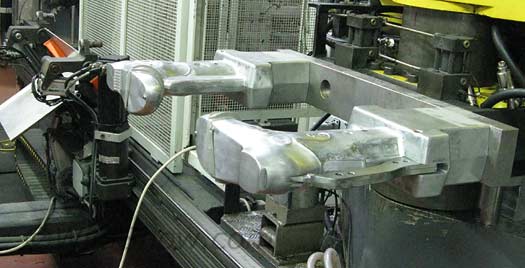
Interior portion of an F1 boot mold. Word is these molds cost around $100,000 euros each. Considering each size of boot requires a different mold, wow. As that money has to be made back with profit over the lifespan of a boot model, one can see why ski boot prices stay high.
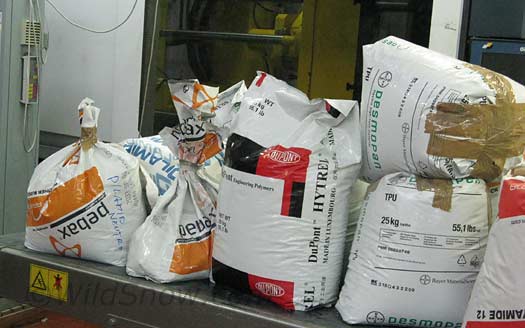
Sacks of Pebax plastic. From this to a day of backcountry powder skiing. Technology. Cool.
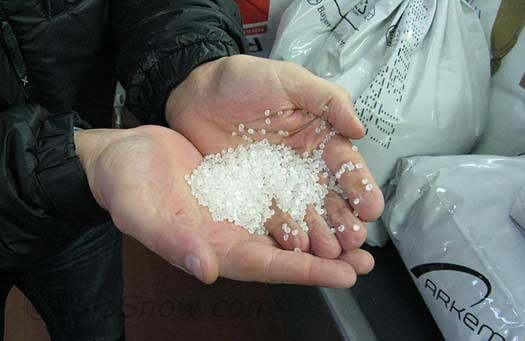
Pebax pellets. These are fed into the injection molding machine, a huge affair that's one of the mainstays of modern manufacturing.
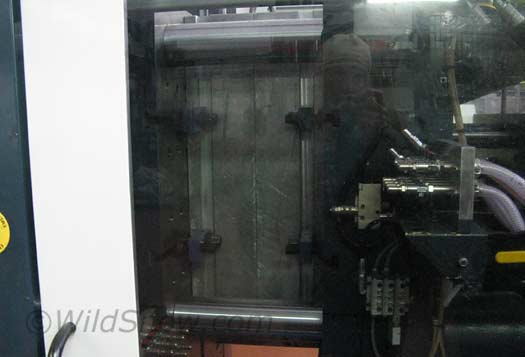
Boot mold closed, being injected.
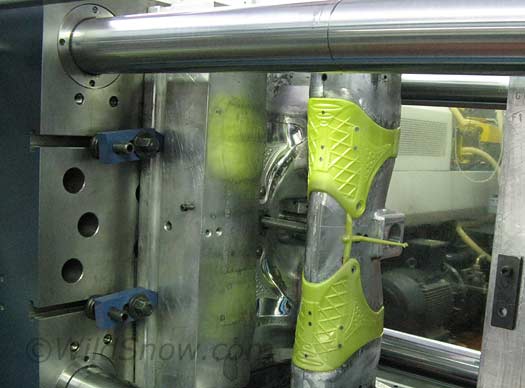
F1 cuff comes out of the mold.
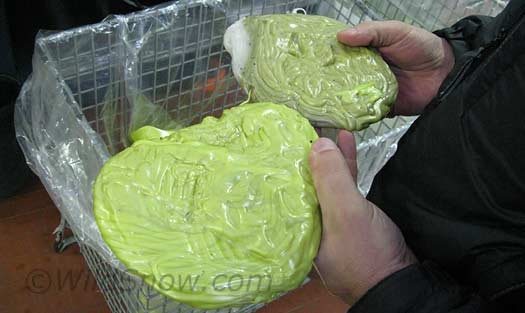
They have to test how the injection machine is heating the plastic, result is a few gloms that look like something from our boot experiments at Wildsnow HQ. Melted plastic Pebax.
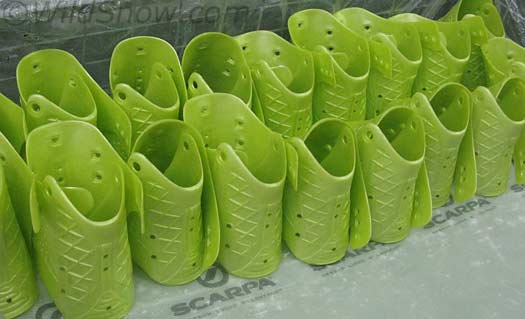
F1 boot cuffs for ski mountaineering racing and touring. After injection, everything is cleaned up and quality inspected. Most parts come out fine, but once in a while the injection process burps and results in a throw-away.
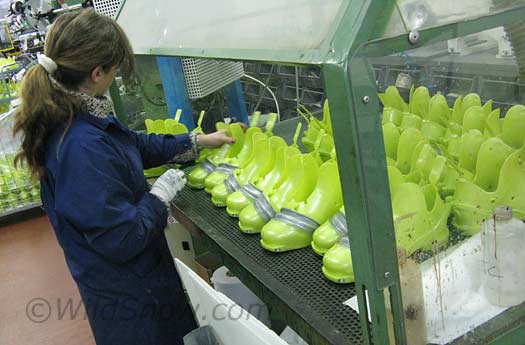
F1 boots being cleaned up for assembly.
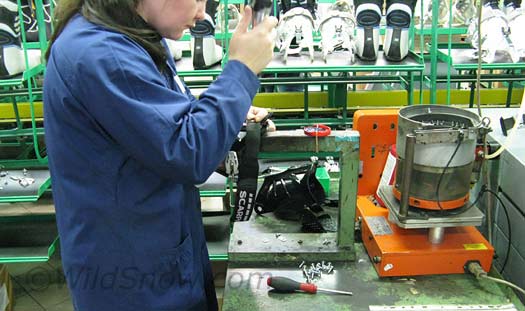
Adding power strap on Maestrale.
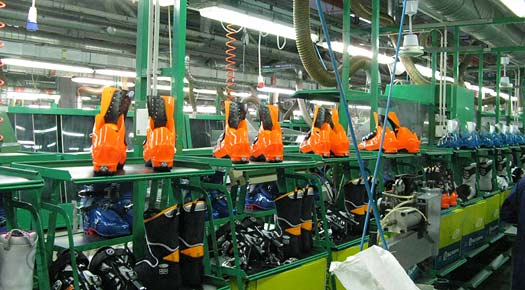
Maestrale final assembly line, Scarpa's most popular boot ever and for good reason.
Takeaways: Seeing a sack of plastic as opposed to a finished ski boot opened my eyes to how amazing modern manufacturing technology is. More, with factory China taking over so much of the word’s widget making, I continue to be impressed at how ski boot makers in Montebelluna and Asolo are keeping their factories alive. That cannot be easy, so kudos to them. Yep, from Pebax to your feet, Scarpa is a company I can honestly give major props.
WildSnow.com publisher emeritus and founder Lou (Louis Dawson) has a 50+ years career in climbing, backcountry skiing and ski mountaineering. He was the first person in history to ski down all 54 Colorado 14,000-foot peaks, has authored numerous books about about backcountry skiing, and has skied from the summit of Denali in Alaska, North America’s highest mountain.
